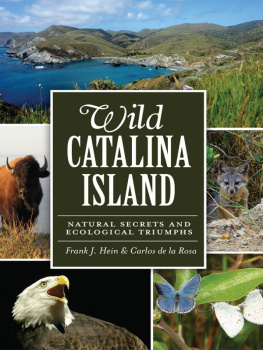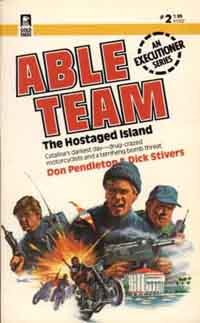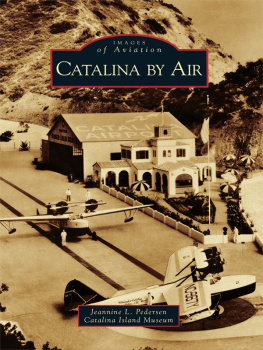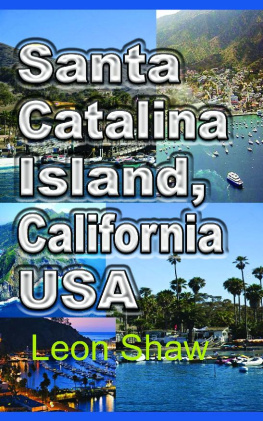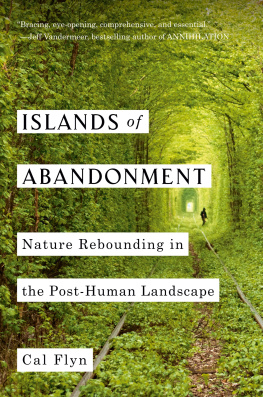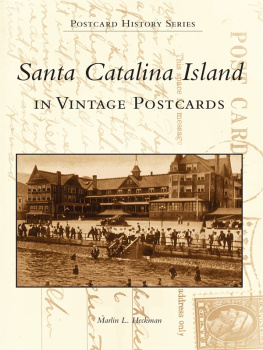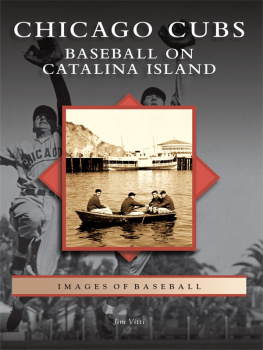
Published by Natural History Press
A Division of The History Press
Charleston, SC 29403
www.historypress.net
Copyright 2013 by Frank J. Hein and Carlos de la Rosa, PhD
All rights reserved
First published 2013
e-book edition 2013
Manufactured in the United States
ISBN 978.1.61423.918.5
Library of Congress CIP data applied for.
printn edition ISBN 978.1.60949.663.0
Notice: The information in this book is true and complete to the best of our knowledge. It is offered without guarantee on the part of the authors or The History Press. The authors and The History Press disclaim all liability in connection with the use of this book.
All rights reserved. No part of this book may be reproduced or transmitted in any form whatsoever without prior written permission from the publisher except in the case of brief quotations embodied in critical articles and reviews.
For my wife, Terri, for her patience and understanding; for my friends for being kind and being there; to my mother, Audrey; and for my father, Bill, who reminded me when it mattered most that I was always meant to be a wildlife man.
F.J. Hein
This book is dedicated to the next generation of Catalina residents and visitors, especially the younger crowd. May they fall in love with the island and take with them their desire to protect nature back to their homelands around the world. This is also dedicated to my wife, Claudia, and my children, Charlie and Lizzy, who share with me the wonders of discovery, science and conservation.
C. de la Rosa
CONTENTS
ACKNOWLEDGEMENTS
Over the years, many, many people have been involved in creating the knowledge base that fed this book. It would be impossible to thank them all by name, but at the risk of an error of omission, we press on. First, a heartfelt thanks to all of the staffpast and presentat the Catalina Island Conservancy for being some of the best, brightest and hardest working teams weve had the joy of serving with. That is equally true for all of the good peoplepast and presentfrom the Institute for Wildlife Studies, whose contributions to the long-term survival of Catalinas wildlife cannot be overstated.
We would like to collectively thank the numerous researchers who have dedicated their lives to exploring, investigating and working out the natural order of things on Catalina, including its people, history, geology and biology. This book would not have been possible without their collective wisdom. We especially thank the following (in no particular order) for their special contributions: Wendy Teeter, Julie King, Calvin Duncan, Tony Summers, Charlie de la Rosa, Cindi Alvitre, Desiree Martinez, Steffani Jijn, Michael Herrera, Shane Barrow, Sarah Ratay, Denise Knapp, John Knapp, John Clark, Peter Dixon, Alexa Johnson, Aaron Morehouse, Bill Bushing, Deb Jensen, Jeff Jensen, Peter Schuyler, Dave Garcelon, Peter Sharpe, Robyn Powers, Darcee Guttilla, Frank Starkey, Rich Zanelli, Cliff Hague, Jeannine Pedersen, Stacey Otte, Lisa Stratton, Shaun Michael, Jeff Chapman, Douglas Comer, Michael Caterino, Thad Manuwal, Darren Sandquist, Scott Sillett, Rick Sweitzer, Angela Aarhus, Aaron Ramrez, Juliette Hart Finzy, Kristen Andersen, Marla Daily, Steve Junak, Winston Vickers, Richard Denney, Shaun Evola, Roland de Govenain, Blanny Hagenah and so many more. And thank you, Leslie Baer, for, well, everything.
We would also like to thank the organizations that made images, materials and research available to us, including the Catalina Island Museum, the City of Avalon, the United States Geological Survey, the Santa Catalina Island Company and the Catalina Island Conservancy, where both authors worked and fell in love with the island.
Finally, a special thanks to the Catalina Island community for their undying love of the island and to the Wrigley and Offield families, who for generations have shared their love for Catalina, their time and resources, and their commitment to preserving and building upon the dream and the vision started so many years ago by William Wrigley Jr.
The images used in this book are from the collections of the authors or the Catalina Island Conservancy unless otherwise credited.
Preface
WHY THIS BOOK?
Catalina is a world-renowned adventure destination. Its a place where you can snorkel, dive, dine, kayak, hike, bike, walk and relax without ever leaving the city of Avalon. And for many, Avalon is all they ever see. If you look at a picture of Catalina from space, however, the first thing youll notice is that Avalon occupies just a tiny speck of Catalina. As nice as Avalon is (and it is), theres more to Catalinaa whole lot more. If youve ever wondered whats beyond Avalon, this book is for you.
Theres a lot to discover out here. There are plants and wildlife found only on Catalina and nowhere else on the planet. Catalina is by far the most accessible of all the Channel Islands and offers a wide variety of ways for visitors to access and experience its natural treasures. If youre not from around here, youre going to need a little help so you can get the most of your time. Whether youre on Catalina for a day, a weekend or are laying plans for a grand adventure on your return trip, this book can help you get the most out of your Catalina experience.
Catalina Island, while technically within the boundaries of Los Angeles County, is largely undeveloped, natural and wild. It is ecologically rare and isolated, yet it is just over an hour from Los Angeles by boat. Fragile yet durable, civilized but wild, it is all of these things and more. To help you understand Catalina, well take you on a journey from its unusual origins to its emergence from the ocean and its ecological birth and growth to the arrival of its first humans and, finally, to the modern day. Catalina is literally unique in the world, and the reasons why make a great story.
This book also explores the activities involved in managing the islands natural areas, including restoration of habitats, management of invasive species, monitoring for disease or newly arriving invasive species and more. We will also take a peek into the future of the island and how its fate is tied to the future of nature and our very planet. Well talk about what makes Catalina so important for everyone who lives, works or plays there, and in the process, we will reveal why anyone who spends time here comes away feeling that Catalina is truly a special place.
This book grew from a series of lectures created by island naturalists designed to inform tour guides, educators, businesses and the community of Catalina about the ecological wonders of the place. The talks took participants on a journey from Catalinas birth through its human and natural history and showed how, against all odds, the island managed to not only survive human impacts but ultimately thrive ecologically and economically. The lectures became trainings, the trainings became stories and those stories became this book.
While written by scientists and informed by science, Wild Catalina Island is anything but a textbook. Its filled with inside stories, unusual facts and unforgettable imagery that come straight from the journals and lenses of the islands top ecological experts. They offer perspectives once known only to researchers and ecologists but now available to you.
Wild Catalina Island is a straightforward, compelling and fun read and the very best way to understand this amazing place before you arrive, while you are here or as you depart to plan your return adventure. Whether you are a first-time visitor or a lifelong lover of Catalina, this book will change the way you think about this jewel of the Pacific.
Next page
